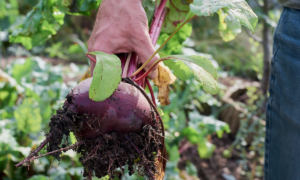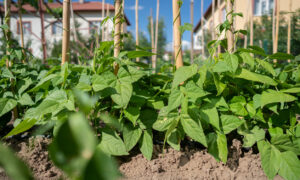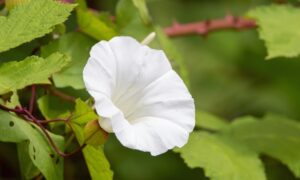We independently research, review, and recommend the best products. If you buy something through our links, we may earn a commission. Learn more.
Have you ever gone over to enjoy your rose bush only to find that it’s been plagued by unsightly black spots? If so, then you’re not alone. Rose black spot is a fairly common fungal disease that can quickly take hold and wreak havoc on the leaves and stems of your roses.
Most rose enthusiasts have had to deal with this problem at some point or another, and there are some tried and tested steps you can take to manage the outbreak. Here, I’ll dive into the world of rose black spot, and help you identify and treat this menace. So, put on your gloves, grab your secateurs, and let’s get started!
Contents
What is rose black spot?
Rose black spot is a fungal disease that affects not only the leaves, but also the stems, of rose bushes. It’s caused by Diplocarpon rosae, a fungus that tends to thrive in warm and humid conditions. The black spots that give the disease its name are actually clusters of fruiting bodies, produced by the fungus as it feeds on the plant’s leaves.
Over time, the black spots can grow larger – and even develop to cover entire leaves. The spots will eventually become surrounded by a yellow halo, before falling off. This process not only undermines the plant’s appearance, but also weakens it, leaving your roses vulnerable to other diseases and pests.
How to identify rose black spot
The good news is that rose black spot is relatively easy to identify. The dark, circular spots that appear on the leaves are a dead giveaway that you have an outbreak on your hands. The spots tend to initially appear on the lower leaves of the plant, before spreading upwards as the disease progresses. When inspecting your rose bush, look out for the following telltale signs:
- Small, circular spots on the leaves of the rose bush
- Yellow halos surrounding the spots
- Yellowing and falling of the leaves
- Reduced overall health and appearance of the rose bush
What causes rose black spot?
When it comes to the causes of rose black spot, humidity is the biggest culprit. When the air is moist and still, the fungal spores that cause black spot can spread more easily from one rose bush to another. To mitigate this, make sure your roses are growing in spaces with good air circulation.
Another factor is rain. While we all might appreciate a good downpour from time to time, the splashing of water can actually help to spread the fungal spores. And finally, the fungus can be spread by pruning tools that have not been properly disinfected between uses.
How to prevent rose black spot
First and foremost, it’s important to choose the right roses for your garden. While all roses can be susceptible to black spot, some varieties are more resistant than others. Look for roses with glossy, dense foliage and a good shape, as these are often less prone to disease. And don’t forget to check the labels on your plants before you buy them. You can often find information about the plant’s resistance to black spot and other diseases.

Next, pay attention to your garden’s environment. Make sure your roses have plenty of sunlight, as this will help to keep the leaves dry and reduce the risk of fungal infection. If you’re growing roses in a shady spot, consider planting companion plants around them to help improve airflow and reduce humidity. And speaking of humidity, it’s a good idea to space your roses out well to allow for good air circulation and reduce the risk of fungal infection.
Watering is also an important factor when it comes to preventing rose black spot. Rather than watering from overhead, try using a watering can with a long spout or a soaker hose that delivers water directly to the roots. This will help to keep the foliage dry and reduce the risk of spreading the fungal spores that cause black spot. Additionally, avoid watering your roses in the evening, as this gives the fungus a chance to take hold overnight when the leaves are still damp.
Finally, don’t forget about consistent maintenance. Regularly deadhead your roses to remove infected blooms, and keep an eye out for any yellowing leaves that may be infected with black spot. If you do notice any infected leaves, remove them promptly and dispose of them well away from your roses. The fungal fragments can survive for several months on fallen leaves.
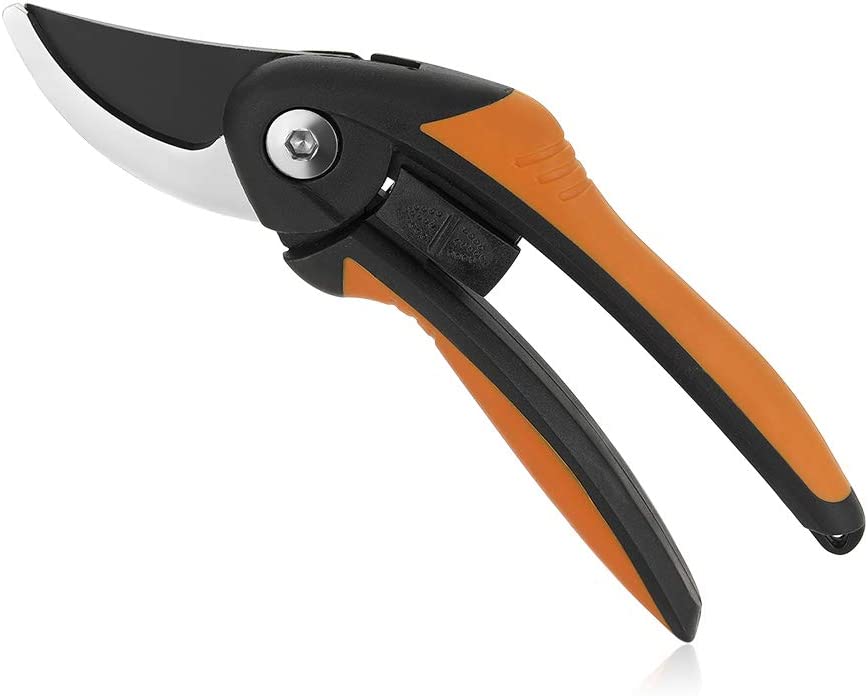
How to treat a black spot outbreak
If you do encounter a case of rose black spot, then do not fear. There’s a wide range of fungicides available for treating this disease, ranging from chemical treatments to organic formula solutions.
When choosing a fungicide, it’s important to consider not only the type of rose you have, but also the severity of the infection. For instance, if you have a delicate variety of rose (like a China Rose), it would make sense to go for an organic treatment that will be less harsh on the plant than a chemical equivalent.
When it comes to chemical treatments, there are plenty of products to choose from. One option is systemic fungicides, which are absorbed into the plant and provide long-lasting protection. The option is contact fungicides, which need to be reapplied regularly to maintain their effectiveness. Whichever type of fungicide you choose, be sure to follow the instructions carefully. If you’re unsure on which specific product to choose, we always recommend Provanto’s Fungus Fighter Plus.
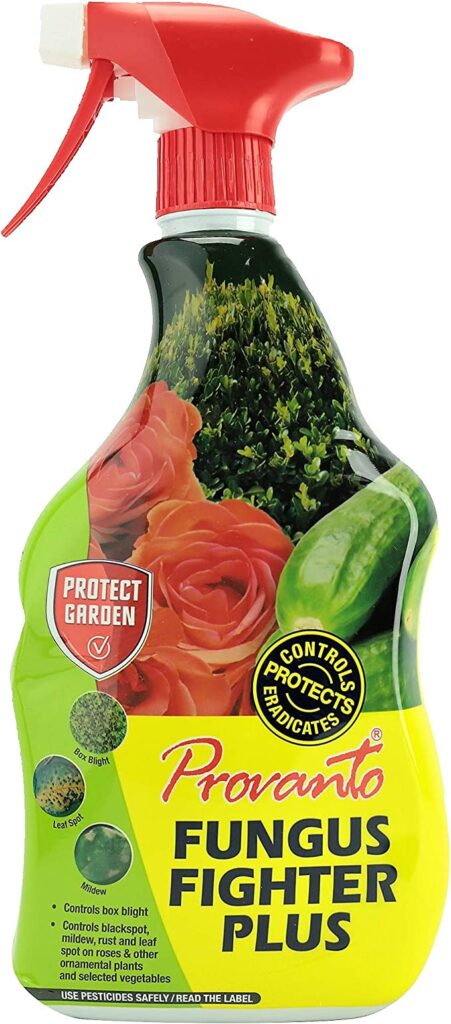
But if you want to go down the organic route, consider applying baking soda, soap and water, or a mixture of neem oil and water to the leaves. These treatments can be effective, but may need to be reapplied regularly. When treating black spot with an organic solution, keep a close eye on your roses and treat them as soon as you notice any symptoms.
And finally, don’t discount the importance of regular maintenance. Keep your roses well-spaced and pruned, and deadhead your plants regularly to remove any infected blooms. By combining the right treatment with good garden hygiene, you can help your roses to recover from black spot and thrive once more.

